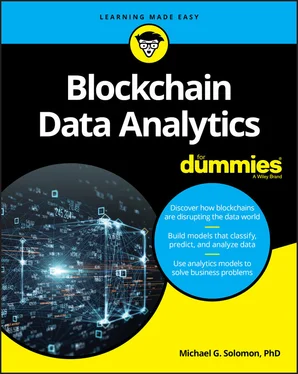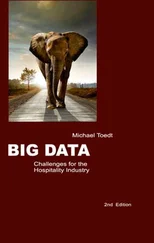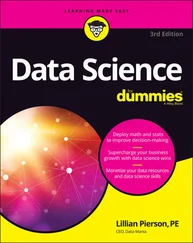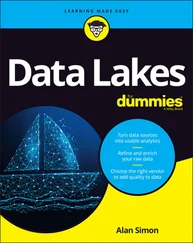 Predicting expected actions with data
Predicting expected actions with data
 Changing plans to control outcome
Changing plans to control outcome
In the twenty-first century, personalization is king — and data makes personalization possible. A good friend can pick out a much more personal gift for you than a stranger because that friend knows what you like and dislike. Marketers have known for decades that establishing a connection with someone can dramatically increase the chances that the person will become a customer. Organizations’ desire to attract customers and increase sales drives the pursuit of meeting consumers’ needs.
Consumers demand personal attention and have come to expect a high level of individualized customer service, online or when physically shopping in a bricks-and-mortar store. Due to advances in consumer interaction sophistication, the bar is high for all types of organizations. For example, it isn’t good enough for web searches to return a general list of responses. Consumers expect their searches to be personalized and filtered based on their preferences. Today’s search engines, and most shopping sites, suggest responses before you even finish typing. It’s almost as if the search function knows you and what you’re about to ask.
The capability to guess what a user is likely to ask or find interesting is based on data. Humans are creatures of habit and most processes (and even natural events) tend to be cyclic. The repetitive nature of behavior means that if you have enough historical data, you should be able to predict what comes next. Expending effort to collect, maintain, and analyze data related to your organization’s operation can help to reduce costs, limit exposure to fines and lawsuits, and lead to increased revenue.
In short, learning how to use your data helps you learn how to make your organization more profitable. In this chapter, you learn about ways that data can provide value to organizations.
The increased trend toward personalized offerings both depends on data and exposes data’s importance to business operations. Data is no longer simply a consequence of engaging in transactions — data is necessary to increase the volume of transactions. Organizations are learning how valuable data is to their capability to conduct and expand operations. If you want to stay competitive in today’s economy, you’ll have to provide an experience that's responsive and personal. Data from previous transactions makes it possible to anticipate subsequent activity and tailor offerings to customer and partner preferences.
For example, the items you’ve bought online in the past give online shopping sites such as Amazon.com enough of your background to be able to make suggestions for additional purchases. Using past data to recommend future purchase or actions is a common way to derive value from data. In this section, I introduce three ways organizations can identify data with the greatest potential value.
Over the past two decades, many organizations have come to view data as the primary fuel of the information age. Since the dawn of the twenty-first century, many organizations with data as their central business driver either started or expanded rapidly. Amazon relies on customer data to make additional purchase suggestions, while companies such as Facebook and Google rely on data as their primary product to drive advertising revenue. All these organizations found ways to turn data into revenue.
As data becomes more directly associated with revenue, data giants Google, Facebook, and Amazon control a growing demand for access to that data. Users have long been encouraged to share their personal data and activities, with little or no compensation. In the beginning, the perception was that sharing personal data was harmless and had little value.
However, a growing number of consumers and business partners realize that their data has value. Legislative bodies have recognized the importance of personal data and are passing new levels of privacy protection legislation each year. Data not only has value in and of itself but, when linked to other related personal data, can also provide valuable insight into personal behavior.
The realization that personal data has value has resulted in a game of sorts. Organizations that value consumer data attempt to acquire as much data as possible, while consumers are becoming more willing to deny free access to their personal data or demand compensation. Compensation often takes the form not of a direct monetary payment but of other perks or discounts.
As organizations realize the increasing value of consumer and partner data, the more they explore ways to leverage that value. When consumers interact with any organization, or organizations interact with partners, a trail of data artifacts is left behind. Artifacts that document transaction timing and contents, as well as any changes to data, describe how entities interact with organizations. As more interactions with all types of organizations become more automated, the quantity and frequency of data artifacts increases.
Organizations that collect data artifacts find that not all are useful — at least not to that organization. However, as data becomes more and more valuable, many organizations have expanded the scope of data they collect with the intention of selling that data to other organizations. As data becomes a source of both direct and indirect revenue, data collection and management moves from a supporting role to a strategic planning concern.
For example, political campaigns routinely spend large sums of money to purchase demographic information on customers who have purchased specific types of products. Political candidates who strongly support environmental issues find value in identifying people who purchase green products because these customers are likely potential supporters. The identities can then be used to solicit campaign donations.
 The overuse of data selling has led to concern and frustration over personal privacy. Most people come to the eventual realization that online activity has consequences. Every time you provide your email address or telephone number to anyone, your data will likely end up being used by some other organization (or probably multiple organizations). Always be careful about what data you allow others to use.
The overuse of data selling has led to concern and frustration over personal privacy. Most people come to the eventual realization that online activity has consequences. Every time you provide your email address or telephone number to anyone, your data will likely end up being used by some other organization (or probably multiple organizations). Always be careful about what data you allow others to use.
Sharing and exchanging data isn’t always bad. In some cases, you want your data to be shared among businesses and organizations. For example, sharing the complete service history for your car could make getting service easier and more reliable. With shared service data, you could take your car to any service provider and not have to remember the last time you had the oil changed or tires rotated. Techniques that support beneficial and responsible data sharing among organizations can be valuable to business and consumers.
One of the obstacles to realizing the full value of data is the dependence on its quality. Quality data is valuable, while incomplete or untrusted data is often worthless. What’s worse, low-quality data may require more budget to clean than it will potentially generate in revenue. The only way to realize data’s true value is to ensure that the data is valid and represents entities in the real world.
Читать дальше

 Predicting expected actions with data
Predicting expected actions with data The overuse of data selling has led to concern and frustration over personal privacy. Most people come to the eventual realization that online activity has consequences. Every time you provide your email address or telephone number to anyone, your data will likely end up being used by some other organization (or probably multiple organizations). Always be careful about what data you allow others to use.
The overuse of data selling has led to concern and frustration over personal privacy. Most people come to the eventual realization that online activity has consequences. Every time you provide your email address or telephone number to anyone, your data will likely end up being used by some other organization (or probably multiple organizations). Always be careful about what data you allow others to use.










